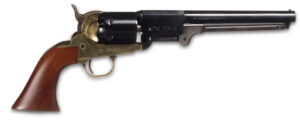All aboard the anachronism express! The photographs on these pages may look as if they were taken a century ago, but in fact they were all made in the past 15 years. Lensman Joel Jensen’s romance with the rails began in 1984, when the Mason City, Iowa, native got stuck in a Wyoming roundhouse while bumming around the country as a young man and spent the night on the cab floor of Union Pacific’s Engine No. 844. Years later, by chance, he saw his first working steam engine chuffing down the tracks. “Ironically, it was the same one that offered a dirt-poor, freight-train-riding college kid a place to sleep,” he says. “From that point on, steam became an obsession.”
Jensen, now 54, is not alone: There are 1.5 million “railfans” in the United States, many of them steam buffs. And although mainline railroads had converted to diesel-electric engines by 1960, as of the latest count there were still some 221 operational steam locomotives in the U.S. and Canada, most of them tourist attractions. To capture his carefully framed, timeless portraits of these singularly American icons, Jensen has ridden the rails behind steam locomotives for more than two decades and 10,000 miles, with whistle-stops in some of the most magnificent landscapes in the American West. Ready to take a ride in a time machine? It’s pulling out of the depot.
All aboard!
The Iron Horse
The West was won with thousands of miles of track that,with the Golden Spike in 1869,connected the vast expanses of a transcontinental nation. Railroads also severed the arteries of American Indian life, making it possible for the descendants of European immigrants to gobble up natural resources and carve out settlements across the continent, as well as interrupting the migrations of species on which the Indians depended. The burgeoning industry created a new species—the railroad man, as peripatetic as his distant cousin, the hobo. And by 1926, there were 69,114 steam engines that could—and did. Fast freights and passenger trains crisscrossed the land, highballing it down the tracks.
Where There’s Smoke
A steam engine is just that: a power plant on wheels. The fireman feeds the firebox with coal, wood or, nowadays, oil carried in a tender behind the engine. The firebox heats water to build up a head of steam. The pressurized steam goes into cylinders and pushes pistons connected to the driving wheels, as well as powering the brakes, bells and whistles. The steam and smoke, made up of soot and cinders, exit through the smoke box and a stack, creating the distinctive plume. A fireman’s job requires not only strength—some shovel tons of coal—but also careful calibration to ensure that the right amount of steam is produced. Most firemen these days are buffs trained by retired railroad employees. Indeed, Jensen himself has stoked a firebox or two.
Back at the Roundhouse
Union Pacific still runs the last two steam engines made in the U.S., No. 3985 and the only mainline locomotive never retired, No. 844. Like many other “heritage” trains, they are corporate symbols that travel to rail festivals and other special events. Restoration can take years, with costs running into the millions; for every hour of operation, a steam engine requires hours of upkeep. Most are provided by volunteers who pound stakes, clean coach toilets, get greasy in machine shops or, as in Jensen’s case, rebuild boxcars. Their only reward is a ticket to ride on what former Smithsonian curator John H. White Jr. calls “monuments to our industrial past.” The photographer who gets the close-ups lives conveniently near the Nevada Northern Railway, listed on the National Register of Historic Places, in Ely, Nev.
Clickety-clack. Click.
Originally published in the April 2012 issue of American History. To subscribe, click here.




